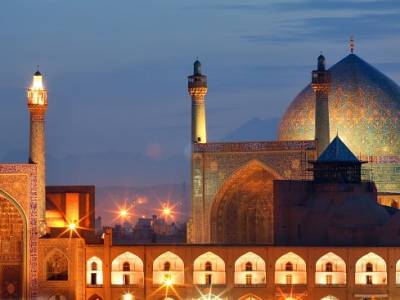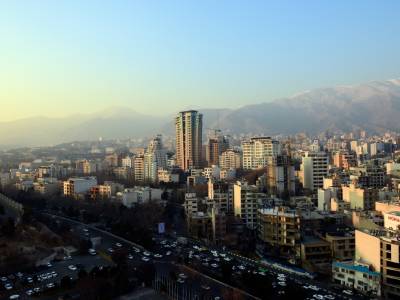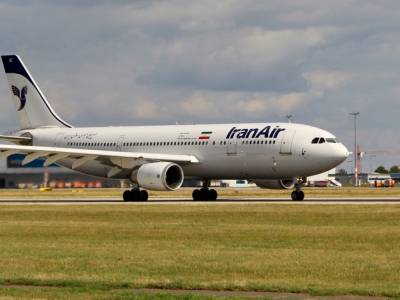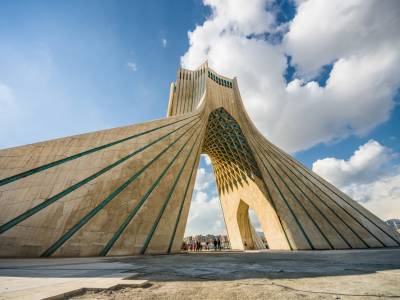-
伊朗
Iran – New Regulations on Transaction of Hard Currencies
20 6 月 2018
- 投资
Currency rate has always been a significant issue in the oil dependent economy of Iran. Therefore, through the last few decades different policies have been adopted by the authorities in order to manage and alleviate the impacts caused by the change of currency rate on growth of the Iranian economy.
The situation regarding the currency market, regardless of conclusion of JCPOA and lifting of economic sanctions against Iran, did not experience much improvement. In fact, during the last few months Iranian currency market has experienced a sudden increase in demand of popular foreign currencies such as United States Dollar (“USD”) and Euro. This chaotic development, also known as foreign currency rate jump crisis, eventually leaded to adoption of a new policy by the Iranian authorities in light of unifying the rate of hard currencies.
New Policy
In light of the above-said developments, on April 11, 2018 the Cabinet of Ministers adopted a new policy in form of a By-law in order to regulate the Iranian currency market and bring order to it. The most important subject within the By-law is paragraph No. 5, establishing a fixed exchange rate – the “Nerkh Mobadelee” – for foreign currencies from April 10, 2018. This fixed exchange rate amounts to IRR 42,000 for each USD and is opposed to the free market rate, which fluctuates according to the rules of supply and demand. Iranian Government recently removed Nerkhe Mobadelee from banking system and forced the market to implement the unified rate, but the enforcement of this unified rate does not meet with the economic conditions of the country and value of IRR and this is causing a paralysis of the economic system.
Import and Export of Goods and Services
According to para. 1 of the By-law, import of all type of goods to Iran weather through Free Industry-Commercial Zones and Special Economic Zones or other entrances is only allowed after order-register. In this respect the Notice No. 9 issued by CBI dated April 14, 2018 states that supply of any currency for the purpose of import of goods to Iran is only possible after the completion of order-register process.
The currency needed for all order-registered goods and services will be supplied through the banking system and authorized exchanges in accordance with the CBI’s regulations. For the implementation of this process a unified platform for exchange of hard currency has been created that is called “NIMA”. Within NIMA four major actors are interacting: goods and services importers as currency applicants, goods and services exporters as currency supplier, banks and exchange offices as intermediaries that direct hard currency from suppliers to applicants and finally the policy maker that determines, among others, currency rate and preference uses of hard currency. In other words, all importers and exporters must supply their needed currency from NIMA or sell their currency through it.
Additionally, if the relevant hard currency is supplied by CBI on the basis of Nerkh Mobadelee, (i.e.: the government fixed exchange rate) but the bill has not been issued yet, the shipping documents must be submitted to the issuing bank within at most six months from the date of supply of the currency; if so, rate of the supplied currency is the basic for the settlement. Moreover, in case of receiving the shipping documents after the prescribed period, admission of the submitted documents is subject to the acceptance of CBI and payment of the difference between the hard currency rate at the time of the issuance of the bill and the date of submission of the shipping documents to the issuing bank (in case of an increase in the rate).
Foreign Currency for Abroad Travels
In accordance with the Notice No. 2 Issued by CBI it is stated that foreign currency for abroad travel is only provided once a year for the amount of EUR 1,000 or its equivalent of other foreign currencies to the passengers at the air outlet boundaries. The amount of foreign currencies provided to passengers to the neighbouring countries and Common-Wealth countries with the exception of Iraq is EUR 500 or its equivalent of other foreign currencies. This foreign currency is only available to the passengers holding an Iranian passport.
Also, entrance of foreign currency to Iran through passengers is only allowed up to the amount of EUR 10,000 or its equivalent of other foreign currencies; entrance of any sums more than that is only permissible in case of declaration in accordance with the conditions sets by CBI.
Allocation of Foreign Currency to Finance Contracts
After adoption of equalisation of foreign currency rate, as explained above, Notice No. 4 issued on April 12, 2018 by CBI provides conditions in respect to the finance contracts in light of the new policy. It states that all payments related to finance contracts including advance payments, repayment of costs etc. from this date is conducted in accordance with the new rate i.e. IRR 42,000 for each USD or its equivalent of other foreign currencies. Also, as to the governmental projects, necessary coordination should be made by the relevant authorities for the purpose of payment based on the new rate.
In addition, regarding those projects that bring foreign currency into country, the project executor must supply relevant foreign currency for the payments.
Currency Exchanges
In light of the new foreign currency polices, para. 13 of the By-law provides for some restrictions on activities conducted by currency exchanges. In this respect, any exchange operation and foreign currency trade outside the conditions provided by CBI is considered as smuggling and will be dealt with in accordance with relevant regulations.
Conclusion
By considering the above it is understood that payment for all import and export transactions related to Iran should be conducted through a governmental controlling channel, imposed by the Central Bank of Iran. Allocation of hard currencies shall also be subject to ratification of the order-register and acceptance of the CBI.
Hence, any Company that is willing to conduct transaction in Iran is advised to remain flexible and adjust itself with these procedures, until further notification and instructions are released in this respect.
In this post we will briefly outline some legal aspects related to e-commerce in Iran, starting from the definition of the average Iranian user and main characteristics and advantages of e-commerce in the Islamic Republic, which is attracting several foreign investors.
We will then analyze the requirements for the issuance of online business licenses in Iran, which is mandatory in order to open an e-shop. Finally we will take a look at some successful examples of online business in Iran.
The average Iranian user
Some statistics regarding Iranian users active in the virtual space are useful for understanding the size of the Iranian market, and why it is attracting several investors.
According to the “Internet Data and Statistics”, Iran is the thirteenth country for number of internet users, as 57 million of Iranian (on 83 million of Iran’s population) have access to internet (approximately the 68% of the population), but Government sources believe these numbers are underestimated.
What matters for the purpose of this analysis, however, is that approximatively the 58% of the internet users search on the Internet is about information on goods and services and that – until the end of Azar 1394 (December 2015) – the average internet users are male (58%) and young (47% between 20 and 29 years old).
In addition, the 42% of the Iranian internet users are involved in electronic commerce and the 13% use the e-banking services.
Online Business Licenses in Iran
Whether carried out in the traditional way or electronically, all the businesses need a business-license to operate on the Iranian market. The most important law governing is the Union System Act 1971, amended in 1980, 2003 and in 2013, which provides that the business license is issued by the competent union or legal authority.
E-commerce is no exception, therefore all those who intend to sell goods or provide services using the virtual space must acquire a business license.
On February 19th, 2017 the Iranian Government issued an Executive Regulation in regard to the Issuance of License and Supervision on Businesses in Virtual Space and Network Marketing, dividing the activities in virtual space into two categories:
- Virtual Business;
- Network Marketing.
According to Paragraph 1 in Article 1, Virtual Business is a business established by any natural or legal person in order to provide products (goods or services) directly or indirectly on a wholesale or retail basis, to wholesalers, retailers and consumers through telecommunication means such as websites and digital software (applications).
According to Paragraph 2 of Article 1, Network Marketing is a method for selling products based on which the Network Marketing company uses its website to organize the sellers in order to sell their products directly to consumers in a place far from the regular business location. Through this method, each seller can introduce another marketer as it subset and create a multi-product sales group in order to increase sales.
The competent authority for issuance of licenses in this regard is the National Union. Therefore, any person who intends to acquire a license in order to have its activities carried out online, must apply on the website of Center for Development of Electronic Commerce (an organ of the Ministry of Industry, Mine and Commerce, hereinafter: “CDEC” – www.enamad.ir) in order to acquire the Reliance Symbol, which is a symbol necessary to certify the identity and competence of online activities.
Requirements for the Online Business License
Article 3 of the Executive Regulation on Issuance of License and Supervision on Businesses in Virtual Space and Network Marketing, which governs the Issuance of Online Business Licenses in Iran, provides that business licenses shall be issued according to the following procedure:
- Establishment of the virtual business conforming to the checklists provided by the CDEC.
- Registration of application in E-Namad website (then the CDEC automatically submits the application to the unions’ website).
- Upload of the required documents, which we will list below.
- Issuance and submission of the license (after verifying the uploaded documents and the original copies thereof) to the applicant within 15 days and submission of the license information to E-Namad website.
- Grant of Electronic Reliance Symbol concurrent with issuance of the license.
Furthermore, the said Regulation specifies the required documents for issuance of business license, as follows:
- Office or legal domicile address of the applicant;
- Negative criminal record from the Police;
- Certificate of the relevant Tax Organization regarding tax compliance;
- Certificate for attendance in educational courses of commerce and business;
- Confirmation of specialized features regarding virtual business issued by the CDED;
- Photocopy of ID-card/Company-Registration number, plus passport/work-permit for foreigners;
- Photocopy of Military Service Termination Card or Permanent or Medical Exemption Card for men under 50 or a Student Certificate.
In addition to those, the Regulation provides some other documents for particular sectors, so it is advisable to contact an Iranian expert in the matter to verify the compliance with all applicable regulations. For instance, the Cultural Heritage, Handicrafts and Tourism Organization of Iran has set out some specific criteria for travel and tourism activities in the virtual space, so travel agency services, accommodation centers, private entities and other tourism services must follow a special procedure to render their services on virtual space.
Successful Examples of Iranian Start-ups
In order to become familiar with this sector, hereinafter we would like to report some inspirational examples of investments.
- Snapp
Snapp is an Iranian ride hailing company which renders its services online. The Snapp application automatically connects the users to the nearest driver and shows the driver the user’s location. Afterwards, the nearest ready driver will pick up the users from their location, and Snapp calculates the price beforehand. This price is normally lower than the Taxi Agency Unions prices and can be received either in cash or via online payment or credit card.
- Digikala
Digikala is the name of one of the biggest e-marketplaces in Iran. Cellphones, laptops and computers, digital cameras, office appliances, automobiles, watches, home appliances, instruments, jewelry, toys, clothes and books are some of the items sold on this website. One of the features of this website is the detailed and comprehensive reviews of different types of digital goods which can be a reliable source for purchasers.
- Pintapin
Pintapin is a comprehensive tool for rendering travel services online. Accommodation services are listed in Pintapin and users can book online their desired location. It is also possible to submit the information regarding your destination, duration of stay and number of companions in order to receive suitable suggestions from Pintapin.
- Bamilo
Bamilo is probably the most important Marketplace businesses in Iran. It started its activity in 2014 and is now among the most viewed websites in Iran. Based on the Amazon-model, the online store is considered as the main Iranian middleman between suppliers and consumers.
- Eskano
Eskano is a smart system for searching real estate in Iran which is performed under international standards. With its huge database of transferable real estates divided between several Iranian cities, Eskano facilitates the sale and lease process, also with the possibility of setting up appointments directly through the website.
The author of this post is Mohammad Rahmani.
当人们想到伊朗的能源资源时,马上就会想到化石燃料资源,例如石油和天然气,它们是伊朗经济的特征。但伊朗在可再生能源领域,如风能、太阳能、生物质能和地热能方面也有很大潜力,这使这一亚洲国家成为能源部门最具吸引力的国家之一。
伊朗能源部门的战略计划为优化化石燃料开采和改善可再生能源生产,以满足国家对能源日益增长的需求。
在这短短的一段时间内,我们将看到外国投资者如何向伊朗可再生能源组织申请,以获得所需的许可证,建立可再生能源工厂,并获得伊朗政府鼓励的优惠税率。
事实上,根据最新的法律法规,伊朗可再生能源组织(SUNA)–在伊朗能源部的组织下–从投资者处通过购电协议(PPA)购买电能。PPA最近设定了新的进料关税的周期,从5年增加到20年。还应当指出,进料电价根据发电厂技术类型不同而不同并将每年调整,但不改变已生效的合同。
项目登记的程序
作为程序的第一步,外国投资者需要向SUNA提交项目注册申请书。由于只有伊朗法人实体被获准申请,外国投资者需要根据伊朗法律合并一家公司,其股份也可能完全由外国投资者所有(请参阅我的文章:在伊朗成立公司)。另外,外国投资者可以购买现有的伊朗公司的股份,成为登记的申请人。
在核实符合必要条件后,施工许可证将得到颁发。值得注意的是,持有许可证的外国投资者不得转让其股份超过25%。
此外,外国投资者需要获得三种不同的许可证:环境许可证、并网许可证和土地许可证。这些许可证应在获得建筑许可证后六个月内获得。如果申请人在该期届满时获得3张许可证中的2张,则可延期。
只有获得上述三证,外国投资者才能与SUNA议定购电协议并启动电厂的建设。
请注意,为了从上述关税中受益,生物量、地热和微型水力发电厂必须在30个月内开始商业运作。这一周期对于风力发电厂和太阳能发电厂分别减少为24个月和15个月。如果这些周期在商业运作开始之前已经通过,那么现行的进料关税将适用。
尽管存在这些挑战,伊朗依旧是最具吸引力的可再生能源市场之一,拥有大量可再生能源和政府的支持政策。
显然,建立一个发电厂需要不同的法律阶段,主要但不仅仅是,根据国家规定获得必要的许可证/允许。因此,与专门从事这一领域的伊朗律师取得联系至关重要,以便有一个全面的咨询,使投资者获得从投资前的分析到有关能源工厂的建设的建议。
愿意在伊朗经营的外国公司有两个主要选择。他们可以在伊朗注册公司,也可以为自己的公司设立分公司或代表处。每个选项都有一系列的特权。
由于最近在伊朗成立公司的法律和惯例的改变,在伊朗设立100%外资公司并不需要伊朗的合伙人是有可能的。根据《伊朗商事登记法》第一条,“任何在伊朗成立的公司都是伊朗公司”,无论合伙人的国籍如何。因此,作为伊朗公司,由外国人组成的公司可以获得一般伊朗公司的所有奖励、设施和可能性。例如,对于外国国民,在伊朗成立一家公司的一个重要优点是它能使公司拥有不动产。事实上,根据伊朗的不动产所有权法,外国人在法律上没有资格拥有任何土地。然而,在伊朗法人实体中成为合伙人的外国人可以以公司名义购买并拥有房地产。只要不违背国家的法律法规,这些公司也可以在任何时候租用不动产。伊朗最受欢迎的两种公司类型是有限责任公司和股份有限公司。
有限责任公司是在两个或两个以上自然人之间以贸易为目的而设立的公司,不将资本划分为股份。在这种公司类型中,每个合伙人的责任严格限制在他们所投资的资本上。该公司的名称不应包含任何合伙人的姓名,否则合伙人将有相对于第三方的无限责任。这种公司类型的合伙人人数最少是两个人,这与股份有限公司不同。
另一种在伊朗运营的非常普遍的公司类型是股份有限公司。这种公司类型的特点是将资本划分成股份。股份有限公司分为公有股份和私有股份。区别在于公有股份有限公司公开发行股票的可能性。私人股份有限公司的最低股东人数为三人,而公有股份公司至少需要五名股东,这些股东应至少提供总资本的五分之一。
除了成立伊朗公司外,外国实体还可以在伊朗注册分公司或代表处。为了允许外国公司通过分公司或代表处在伊朗工作,这些公司需要在其原籍国得到法律承认。
一项单一条款法于1997在伊朗议会通过,允许在外国司法管辖区合法注册的公司在伊朗注册分公司/代表处。这样的分公司/代表处可从事下列活动:
- 提供海外产品/服务的售后服务。
- 订立伊朗和外国公司签订的经营合同。
- 开展调查,为伊朗外商投资提供必要条件。
- 与伊朗技术/工程公司合作,在其他国家开展项目。
- 增加伊朗的非石油出口。
- 提供技术/工程服务和技术转让。
- 从事伊朗法律主管机关授权的活动,如运输、保险、货物检验、银行、市场营销等。
一个分公司或代表处的管理需要由居住在伊朗的一个或多个自然人完成。分公司是外国公司的当地单位,直接负责外国公司在当地开展的活动。分公司应以公司名义和责任行事。相反,代表处可以是自然人,也可以是法人,应当以自己的名义和责任行事。
想要在伊朗注册分公司的外国公司,需要向登记和工业产权办公室提交公司的一些有关申请的文件。
至于代表处,必须介绍一名伊朗法律或自然人作为代表。每个公司都允许在伊朗注册一个官方代表处。除代理协议外,该代表将在伊朗履行部分外国公司的职责。代表应将申请书附上的经核证的翻译和原始文件提交公司登记处和工业产权局。
不允许进行交易的代表处和分支机构,专门为母公司进行市场调查,并从母公司收取费用以支付其费用,向母公司收取的付款无需交税。
Patent can be registered in Iran through an electronic application to the Iranian Intellectual Property Center of State Organization for Registration of Deeds and Properties. Iran regulations regarding this issue include Patents, Industrial Designs and Trademarks Registration Act (2008) and the Executive Regulation of Patent, Industrial Designs and Trademarks Registration Law (2009).
According to article 5 of the above mentioned Act, also Iran – as many other jurisdictions, such as Germany, Japan and EU – applies the First to File system.
Here below we are going to analyse the main steps of National Patent Registration: Application and Examination, Objection to Rejection, Inquiry and Registration or Rejection.
Application and Examination
The process of registration is mostly carried out electronically. The application is filed through the website of Iranian Intellectual Property Center.
The second step to register a Patent in Iran is the examination. Iranian regulations provide two types of examination regarding patent applications: Formal examination and Substantive examination.
After the classification made in accordance with the IPC (International Patent Classification), begins the formal examination of the application. At this stage, if the application information or appendices are incomplete, a notice of defects shall be issued by the Iranian registration authority and the applicant shall remove the defects and electronically submit all the correct information and appendices, within 30 days for the residents of Iran or 60 days for those residing overseas.
Once passed the formal examination, the registration authority has 6 months to verify that the application complies with the provisions of the abovementioned Executive Regulation. In the case that the patentability of the application is uncertain, a notice of conditional rejection shall be sent to the applicant, which shall submit the relevant reasons and documents in response to the patent rejection notice.
On the contrary, if the patentability of the application is certain, a research will be conducted in the database of the Intellectual Property Center to verify if there is a similar Patent. If so, a declaration regarding the existence of similar records shall be issued and the applicant shall prepare a report which explains the differences between the two records. If the research results show an identical previous registration, a rejection notice will be issued.
Objection to Rejection
At this stage, if the applicant has an objection, he can submit the motivations and evidences in support of the application, only after having payed the fees for Commission. This latter shall investigate on the matter and issue an official decision, which can be challenged within 60 days for the residents in Iran and 120 days for those residing overseas.
Inquiry
Following the examinations and the eventual objection process, it is possible for the registration authority to carry out an inquiry from specialized authorities to help provide a better substantive examination that lasts at most three months.
Afterwards, the applicant should submit the response of the inquiry through the website. In this case, the next steps might differ based on the negative or affirmative result of the inquiry.
Registration or Rejection
If the inquiry is affirmative the acceptance notice shall be issued, the application shall be registered and the registration fees shall be paid by the applicant within 30 days for the residents of Iran and 60 days for those residing overseas. After having paid the fees, the registration notice will be issued and published within 30 days after registration in the official gazette and, at last, the patent certificate can be issued.
In the case that the inquiry is negative, a warning notice shall be issued before the definitive rejection. The applicant can submit some supplementary documents in order to integrate the application; otherwise the rejection notice shall be issued.
The author of this post is Mohammad Rahmani.
Aviation law is a highly specialized branch of law which addresses all concerns associated with different facets of air travel. There is a high number of international conventions that regulate aviation law at a global level. However, countries still have their own national framework. The three main areas of aviation law include: regulatory compliance, finances and claims.
Regulatory compliance
As far as Iran is concerned, Iranian aviation laws date back to a long time ago. The main body of law is Civil Aviation Law of 1959, which established the Civil Aviation Organization of Iran and also dealt with nationality of aircrafts. According to article 9 of this law, Iranian airlines have the exclusive right to domestic flights.
In addition to being a founding member state of the Chicago Convention on International Civil Aviation of 1944, Iran is part of the Warsaw system, having acceded to Warsaw Convention and two of its additional protocols, namely The Hague Protocol of 1955 and Guatemala Protocol of 1971. Iran is still not a member of the Montreal Convention on Unification of Certain Rules for International Carriage by Air signed in 1999. Montreal Convention could apply in cases when foreign airlines belonging to countries that have ratified this Convention operate flights in Iran. Similarly, the legal framework applicable to Iranian airlines operating anywhere in the world would be the one of Warsaw treaty.
Finances
As far as financing, purchase, chartering and lease of aircrafts are concerned, the latest directive, issued in 2014, allows only the purchase or chartering of aircrafts that are less than 15 years old. The new directive has also facilitated imports by reducing the existing bureaucracy. The aircraft could be purchased or leased. A lease, by definition, is transference of possession without transference of title. A lease is normally justified on grounds of financial reasons. The directive allows both ‘Dry’ and ‘Wet’ Lease for Iranian Air-lines. Dry Lease refers to leasing an aircraft without crew, maintenance and other services, while in Wet Lease the aircraft is crewed by the lessor. In this sense, a wet lease is an exception to the rule because the possession of the aircraft is not transferred and the aircraft is still operated by the lessor. There are also technical requirements for aircrafts that need to be satisfied. The leaser must possess a valid A.O.C. (air operator’s certificate) as well as a valid repair certificate and the foreign registration of the aircraft must be nullified.
Claims
Claims could arise in case of delay, luggage loss or aviation accidents. In the Iranian legal system, a clear distinction must be made between domestic and international airlines as there are different applicable laws. Even for domestic airlines, domestic and international flights are subject to different compensation mechanisms.
Since Iran is a party of the Warsaw Convention and its additional protocols, in principle, damages arising from flights should be subject to the Warsaw system. This is particularly true when Iranian airlines are operating international flights. However, in domestic flights operated by Iranian airlines, with the enactment of the new “Iran Civil Aviation Liability for Iranian Airlines Act” in 2012, there is a dual system according to which the Warsaw provisions still apply to damages incurred to passengers’ luggage, but damages to human life, including death and injuries, arising out of accidents for domestic flights are subject to Iran Islamic Penal Law. In other words, domestic airlines in domestic flights have been excluded from the Warsaw system as far as human injuries are concerned.
Another relevant issue is insurance programs available to airlines which cover costs arising out of such incidents. At present, many insurance programs are available to airlines.
The Foreign Investment Protection and Promotion Act of Iran of 2002 (FIPPA) does not give a precise definition of investment. However, according to article one of the law, it shall include any cash or non-cash flow of investment into the country and could encompass cash flows in foreign currency through the Iranian banking system or other legitimate means, machinery, spare parts, raw materials, CKD (knock-down-kit) and SKD (semi-knocked-down-kit) parts, intellectual property such as knowhow, patents and registered names, technical services, transferable share dividends and anything else if approved by the Council of Ministers. Foreign direct investments are allowed only in sectors in which private ownership is permitted. Build Operate Transfer (BOT) agreements and Civil Partnerships can be used in all areas, including upstream oil and gas industry, where foreign direct investment is prohibited due to a constitutional ban.
With the enactment of FIPPA, obtaining an investment license has become very straightforward. As a rule of thumb, there is a minimum amount of $ 300,000 to apply for a FIPPA license. The entire process of obtaining a license should take no longer than 45 days since the date of submission of documents to the Organization for Economic and Technical Assistance of Iran (hereinafter “OIETAI”), the main foreign investment authority in Iran. The application can be submitted directly by the foreign investor or their legal representative in Iran. The application form is downloadable online, must be completed in Persian or in English language and is reviewed by the OIETAI in coordination with the relevant Ministry. This stage may last up to 15 days. OETAI refers the application to the Foreign Investment Board which shall make the final decision regarding the admission of the foreign investment. The Foreign Investment Board is the highest-ranking authority and is the authority which finally issues the FIPPA license. The board includes six high-ranking official members of the government, the head of OETAI and some other prominent figures.
Should the Board reject the application, the decision can be appealed; in case the application is accepted, the license is signed by the Minister of Economic Affairs and Finance. The license is then communicated to the foreign investor by OETAI. The latter stage might take a maximum of 30 days, without considering the delay which may be caused by an appeal request.
A FIPPA license lists the amount of foreign investment, name of foreign and Iranian partners, type and area of investment, means for transference of capital contributions and the requirements regarding the investment project. The license is issued for a specific period during which at least part of the investment must be transferred to Iran. Foreign investors can file a request for an extension prior to the expiry of the deadline set by the Board of Investment, mentioning justified reasons for such a request. This request will be reviewed by the Board of Investment. If no investment is made during before the given deadline, absent justifiable excuses, the license will be revoked.
In general, merely commercial or trading activities do not qualify for FIPPA license unless they are accompanied by production. Investment in services may qualify for a FIPPA license subject to the decision of the Board.
写信给 Encyeh
Iran – Online business and eCommerce
5 12 月 2017
-
伊朗
- 电子商务
- 投资
- 启动
- 赛车
Currency rate has always been a significant issue in the oil dependent economy of Iran. Therefore, through the last few decades different policies have been adopted by the authorities in order to manage and alleviate the impacts caused by the change of currency rate on growth of the Iranian economy.
The situation regarding the currency market, regardless of conclusion of JCPOA and lifting of economic sanctions against Iran, did not experience much improvement. In fact, during the last few months Iranian currency market has experienced a sudden increase in demand of popular foreign currencies such as United States Dollar (“USD”) and Euro. This chaotic development, also known as foreign currency rate jump crisis, eventually leaded to adoption of a new policy by the Iranian authorities in light of unifying the rate of hard currencies.
New Policy
In light of the above-said developments, on April 11, 2018 the Cabinet of Ministers adopted a new policy in form of a By-law in order to regulate the Iranian currency market and bring order to it. The most important subject within the By-law is paragraph No. 5, establishing a fixed exchange rate – the “Nerkh Mobadelee” – for foreign currencies from April 10, 2018. This fixed exchange rate amounts to IRR 42,000 for each USD and is opposed to the free market rate, which fluctuates according to the rules of supply and demand. Iranian Government recently removed Nerkhe Mobadelee from banking system and forced the market to implement the unified rate, but the enforcement of this unified rate does not meet with the economic conditions of the country and value of IRR and this is causing a paralysis of the economic system.
Import and Export of Goods and Services
According to para. 1 of the By-law, import of all type of goods to Iran weather through Free Industry-Commercial Zones and Special Economic Zones or other entrances is only allowed after order-register. In this respect the Notice No. 9 issued by CBI dated April 14, 2018 states that supply of any currency for the purpose of import of goods to Iran is only possible after the completion of order-register process.
The currency needed for all order-registered goods and services will be supplied through the banking system and authorized exchanges in accordance with the CBI’s regulations. For the implementation of this process a unified platform for exchange of hard currency has been created that is called “NIMA”. Within NIMA four major actors are interacting: goods and services importers as currency applicants, goods and services exporters as currency supplier, banks and exchange offices as intermediaries that direct hard currency from suppliers to applicants and finally the policy maker that determines, among others, currency rate and preference uses of hard currency. In other words, all importers and exporters must supply their needed currency from NIMA or sell their currency through it.
Additionally, if the relevant hard currency is supplied by CBI on the basis of Nerkh Mobadelee, (i.e.: the government fixed exchange rate) but the bill has not been issued yet, the shipping documents must be submitted to the issuing bank within at most six months from the date of supply of the currency; if so, rate of the supplied currency is the basic for the settlement. Moreover, in case of receiving the shipping documents after the prescribed period, admission of the submitted documents is subject to the acceptance of CBI and payment of the difference between the hard currency rate at the time of the issuance of the bill and the date of submission of the shipping documents to the issuing bank (in case of an increase in the rate).
Foreign Currency for Abroad Travels
In accordance with the Notice No. 2 Issued by CBI it is stated that foreign currency for abroad travel is only provided once a year for the amount of EUR 1,000 or its equivalent of other foreign currencies to the passengers at the air outlet boundaries. The amount of foreign currencies provided to passengers to the neighbouring countries and Common-Wealth countries with the exception of Iraq is EUR 500 or its equivalent of other foreign currencies. This foreign currency is only available to the passengers holding an Iranian passport.
Also, entrance of foreign currency to Iran through passengers is only allowed up to the amount of EUR 10,000 or its equivalent of other foreign currencies; entrance of any sums more than that is only permissible in case of declaration in accordance with the conditions sets by CBI.
Allocation of Foreign Currency to Finance Contracts
After adoption of equalisation of foreign currency rate, as explained above, Notice No. 4 issued on April 12, 2018 by CBI provides conditions in respect to the finance contracts in light of the new policy. It states that all payments related to finance contracts including advance payments, repayment of costs etc. from this date is conducted in accordance with the new rate i.e. IRR 42,000 for each USD or its equivalent of other foreign currencies. Also, as to the governmental projects, necessary coordination should be made by the relevant authorities for the purpose of payment based on the new rate.
In addition, regarding those projects that bring foreign currency into country, the project executor must supply relevant foreign currency for the payments.
Currency Exchanges
In light of the new foreign currency polices, para. 13 of the By-law provides for some restrictions on activities conducted by currency exchanges. In this respect, any exchange operation and foreign currency trade outside the conditions provided by CBI is considered as smuggling and will be dealt with in accordance with relevant regulations.
Conclusion
By considering the above it is understood that payment for all import and export transactions related to Iran should be conducted through a governmental controlling channel, imposed by the Central Bank of Iran. Allocation of hard currencies shall also be subject to ratification of the order-register and acceptance of the CBI.
Hence, any Company that is willing to conduct transaction in Iran is advised to remain flexible and adjust itself with these procedures, until further notification and instructions are released in this respect.
In this post we will briefly outline some legal aspects related to e-commerce in Iran, starting from the definition of the average Iranian user and main characteristics and advantages of e-commerce in the Islamic Republic, which is attracting several foreign investors.
We will then analyze the requirements for the issuance of online business licenses in Iran, which is mandatory in order to open an e-shop. Finally we will take a look at some successful examples of online business in Iran.
The average Iranian user
Some statistics regarding Iranian users active in the virtual space are useful for understanding the size of the Iranian market, and why it is attracting several investors.
According to the “Internet Data and Statistics”, Iran is the thirteenth country for number of internet users, as 57 million of Iranian (on 83 million of Iran’s population) have access to internet (approximately the 68% of the population), but Government sources believe these numbers are underestimated.
What matters for the purpose of this analysis, however, is that approximatively the 58% of the internet users search on the Internet is about information on goods and services and that – until the end of Azar 1394 (December 2015) – the average internet users are male (58%) and young (47% between 20 and 29 years old).
In addition, the 42% of the Iranian internet users are involved in electronic commerce and the 13% use the e-banking services.
Online Business Licenses in Iran
Whether carried out in the traditional way or electronically, all the businesses need a business-license to operate on the Iranian market. The most important law governing is the Union System Act 1971, amended in 1980, 2003 and in 2013, which provides that the business license is issued by the competent union or legal authority.
E-commerce is no exception, therefore all those who intend to sell goods or provide services using the virtual space must acquire a business license.
On February 19th, 2017 the Iranian Government issued an Executive Regulation in regard to the Issuance of License and Supervision on Businesses in Virtual Space and Network Marketing, dividing the activities in virtual space into two categories:
- Virtual Business;
- Network Marketing.
According to Paragraph 1 in Article 1, Virtual Business is a business established by any natural or legal person in order to provide products (goods or services) directly or indirectly on a wholesale or retail basis, to wholesalers, retailers and consumers through telecommunication means such as websites and digital software (applications).
According to Paragraph 2 of Article 1, Network Marketing is a method for selling products based on which the Network Marketing company uses its website to organize the sellers in order to sell their products directly to consumers in a place far from the regular business location. Through this method, each seller can introduce another marketer as it subset and create a multi-product sales group in order to increase sales.
The competent authority for issuance of licenses in this regard is the National Union. Therefore, any person who intends to acquire a license in order to have its activities carried out online, must apply on the website of Center for Development of Electronic Commerce (an organ of the Ministry of Industry, Mine and Commerce, hereinafter: “CDEC” – www.enamad.ir) in order to acquire the Reliance Symbol, which is a symbol necessary to certify the identity and competence of online activities.
Requirements for the Online Business License
Article 3 of the Executive Regulation on Issuance of License and Supervision on Businesses in Virtual Space and Network Marketing, which governs the Issuance of Online Business Licenses in Iran, provides that business licenses shall be issued according to the following procedure:
- Establishment of the virtual business conforming to the checklists provided by the CDEC.
- Registration of application in E-Namad website (then the CDEC automatically submits the application to the unions’ website).
- Upload of the required documents, which we will list below.
- Issuance and submission of the license (after verifying the uploaded documents and the original copies thereof) to the applicant within 15 days and submission of the license information to E-Namad website.
- Grant of Electronic Reliance Symbol concurrent with issuance of the license.
Furthermore, the said Regulation specifies the required documents for issuance of business license, as follows:
- Office or legal domicile address of the applicant;
- Negative criminal record from the Police;
- Certificate of the relevant Tax Organization regarding tax compliance;
- Certificate for attendance in educational courses of commerce and business;
- Confirmation of specialized features regarding virtual business issued by the CDED;
- Photocopy of ID-card/Company-Registration number, plus passport/work-permit for foreigners;
- Photocopy of Military Service Termination Card or Permanent or Medical Exemption Card for men under 50 or a Student Certificate.
In addition to those, the Regulation provides some other documents for particular sectors, so it is advisable to contact an Iranian expert in the matter to verify the compliance with all applicable regulations. For instance, the Cultural Heritage, Handicrafts and Tourism Organization of Iran has set out some specific criteria for travel and tourism activities in the virtual space, so travel agency services, accommodation centers, private entities and other tourism services must follow a special procedure to render their services on virtual space.
Successful Examples of Iranian Start-ups
In order to become familiar with this sector, hereinafter we would like to report some inspirational examples of investments.
- Snapp
Snapp is an Iranian ride hailing company which renders its services online. The Snapp application automatically connects the users to the nearest driver and shows the driver the user’s location. Afterwards, the nearest ready driver will pick up the users from their location, and Snapp calculates the price beforehand. This price is normally lower than the Taxi Agency Unions prices and can be received either in cash or via online payment or credit card.
- Digikala
Digikala is the name of one of the biggest e-marketplaces in Iran. Cellphones, laptops and computers, digital cameras, office appliances, automobiles, watches, home appliances, instruments, jewelry, toys, clothes and books are some of the items sold on this website. One of the features of this website is the detailed and comprehensive reviews of different types of digital goods which can be a reliable source for purchasers.
- Pintapin
Pintapin is a comprehensive tool for rendering travel services online. Accommodation services are listed in Pintapin and users can book online their desired location. It is also possible to submit the information regarding your destination, duration of stay and number of companions in order to receive suitable suggestions from Pintapin.
- Bamilo
Bamilo is probably the most important Marketplace businesses in Iran. It started its activity in 2014 and is now among the most viewed websites in Iran. Based on the Amazon-model, the online store is considered as the main Iranian middleman between suppliers and consumers.
- Eskano
Eskano is a smart system for searching real estate in Iran which is performed under international standards. With its huge database of transferable real estates divided between several Iranian cities, Eskano facilitates the sale and lease process, also with the possibility of setting up appointments directly through the website.
The author of this post is Mohammad Rahmani.
当人们想到伊朗的能源资源时,马上就会想到化石燃料资源,例如石油和天然气,它们是伊朗经济的特征。但伊朗在可再生能源领域,如风能、太阳能、生物质能和地热能方面也有很大潜力,这使这一亚洲国家成为能源部门最具吸引力的国家之一。
伊朗能源部门的战略计划为优化化石燃料开采和改善可再生能源生产,以满足国家对能源日益增长的需求。
在这短短的一段时间内,我们将看到外国投资者如何向伊朗可再生能源组织申请,以获得所需的许可证,建立可再生能源工厂,并获得伊朗政府鼓励的优惠税率。
事实上,根据最新的法律法规,伊朗可再生能源组织(SUNA)–在伊朗能源部的组织下–从投资者处通过购电协议(PPA)购买电能。PPA最近设定了新的进料关税的周期,从5年增加到20年。还应当指出,进料电价根据发电厂技术类型不同而不同并将每年调整,但不改变已生效的合同。
项目登记的程序
作为程序的第一步,外国投资者需要向SUNA提交项目注册申请书。由于只有伊朗法人实体被获准申请,外国投资者需要根据伊朗法律合并一家公司,其股份也可能完全由外国投资者所有(请参阅我的文章:在伊朗成立公司)。另外,外国投资者可以购买现有的伊朗公司的股份,成为登记的申请人。
在核实符合必要条件后,施工许可证将得到颁发。值得注意的是,持有许可证的外国投资者不得转让其股份超过25%。
此外,外国投资者需要获得三种不同的许可证:环境许可证、并网许可证和土地许可证。这些许可证应在获得建筑许可证后六个月内获得。如果申请人在该期届满时获得3张许可证中的2张,则可延期。
只有获得上述三证,外国投资者才能与SUNA议定购电协议并启动电厂的建设。
请注意,为了从上述关税中受益,生物量、地热和微型水力发电厂必须在30个月内开始商业运作。这一周期对于风力发电厂和太阳能发电厂分别减少为24个月和15个月。如果这些周期在商业运作开始之前已经通过,那么现行的进料关税将适用。
尽管存在这些挑战,伊朗依旧是最具吸引力的可再生能源市场之一,拥有大量可再生能源和政府的支持政策。
显然,建立一个发电厂需要不同的法律阶段,主要但不仅仅是,根据国家规定获得必要的许可证/允许。因此,与专门从事这一领域的伊朗律师取得联系至关重要,以便有一个全面的咨询,使投资者获得从投资前的分析到有关能源工厂的建设的建议。
愿意在伊朗经营的外国公司有两个主要选择。他们可以在伊朗注册公司,也可以为自己的公司设立分公司或代表处。每个选项都有一系列的特权。
由于最近在伊朗成立公司的法律和惯例的改变,在伊朗设立100%外资公司并不需要伊朗的合伙人是有可能的。根据《伊朗商事登记法》第一条,“任何在伊朗成立的公司都是伊朗公司”,无论合伙人的国籍如何。因此,作为伊朗公司,由外国人组成的公司可以获得一般伊朗公司的所有奖励、设施和可能性。例如,对于外国国民,在伊朗成立一家公司的一个重要优点是它能使公司拥有不动产。事实上,根据伊朗的不动产所有权法,外国人在法律上没有资格拥有任何土地。然而,在伊朗法人实体中成为合伙人的外国人可以以公司名义购买并拥有房地产。只要不违背国家的法律法规,这些公司也可以在任何时候租用不动产。伊朗最受欢迎的两种公司类型是有限责任公司和股份有限公司。
有限责任公司是在两个或两个以上自然人之间以贸易为目的而设立的公司,不将资本划分为股份。在这种公司类型中,每个合伙人的责任严格限制在他们所投资的资本上。该公司的名称不应包含任何合伙人的姓名,否则合伙人将有相对于第三方的无限责任。这种公司类型的合伙人人数最少是两个人,这与股份有限公司不同。
另一种在伊朗运营的非常普遍的公司类型是股份有限公司。这种公司类型的特点是将资本划分成股份。股份有限公司分为公有股份和私有股份。区别在于公有股份有限公司公开发行股票的可能性。私人股份有限公司的最低股东人数为三人,而公有股份公司至少需要五名股东,这些股东应至少提供总资本的五分之一。
除了成立伊朗公司外,外国实体还可以在伊朗注册分公司或代表处。为了允许外国公司通过分公司或代表处在伊朗工作,这些公司需要在其原籍国得到法律承认。
一项单一条款法于1997在伊朗议会通过,允许在外国司法管辖区合法注册的公司在伊朗注册分公司/代表处。这样的分公司/代表处可从事下列活动:
- 提供海外产品/服务的售后服务。
- 订立伊朗和外国公司签订的经营合同。
- 开展调查,为伊朗外商投资提供必要条件。
- 与伊朗技术/工程公司合作,在其他国家开展项目。
- 增加伊朗的非石油出口。
- 提供技术/工程服务和技术转让。
- 从事伊朗法律主管机关授权的活动,如运输、保险、货物检验、银行、市场营销等。
一个分公司或代表处的管理需要由居住在伊朗的一个或多个自然人完成。分公司是外国公司的当地单位,直接负责外国公司在当地开展的活动。分公司应以公司名义和责任行事。相反,代表处可以是自然人,也可以是法人,应当以自己的名义和责任行事。
想要在伊朗注册分公司的外国公司,需要向登记和工业产权办公室提交公司的一些有关申请的文件。
至于代表处,必须介绍一名伊朗法律或自然人作为代表。每个公司都允许在伊朗注册一个官方代表处。除代理协议外,该代表将在伊朗履行部分外国公司的职责。代表应将申请书附上的经核证的翻译和原始文件提交公司登记处和工业产权局。
不允许进行交易的代表处和分支机构,专门为母公司进行市场调查,并从母公司收取费用以支付其费用,向母公司收取的付款无需交税。
Patent can be registered in Iran through an electronic application to the Iranian Intellectual Property Center of State Organization for Registration of Deeds and Properties. Iran regulations regarding this issue include Patents, Industrial Designs and Trademarks Registration Act (2008) and the Executive Regulation of Patent, Industrial Designs and Trademarks Registration Law (2009).
According to article 5 of the above mentioned Act, also Iran – as many other jurisdictions, such as Germany, Japan and EU – applies the First to File system.
Here below we are going to analyse the main steps of National Patent Registration: Application and Examination, Objection to Rejection, Inquiry and Registration or Rejection.
Application and Examination
The process of registration is mostly carried out electronically. The application is filed through the website of Iranian Intellectual Property Center.
The second step to register a Patent in Iran is the examination. Iranian regulations provide two types of examination regarding patent applications: Formal examination and Substantive examination.
After the classification made in accordance with the IPC (International Patent Classification), begins the formal examination of the application. At this stage, if the application information or appendices are incomplete, a notice of defects shall be issued by the Iranian registration authority and the applicant shall remove the defects and electronically submit all the correct information and appendices, within 30 days for the residents of Iran or 60 days for those residing overseas.
Once passed the formal examination, the registration authority has 6 months to verify that the application complies with the provisions of the abovementioned Executive Regulation. In the case that the patentability of the application is uncertain, a notice of conditional rejection shall be sent to the applicant, which shall submit the relevant reasons and documents in response to the patent rejection notice.
On the contrary, if the patentability of the application is certain, a research will be conducted in the database of the Intellectual Property Center to verify if there is a similar Patent. If so, a declaration regarding the existence of similar records shall be issued and the applicant shall prepare a report which explains the differences between the two records. If the research results show an identical previous registration, a rejection notice will be issued.
Objection to Rejection
At this stage, if the applicant has an objection, he can submit the motivations and evidences in support of the application, only after having payed the fees for Commission. This latter shall investigate on the matter and issue an official decision, which can be challenged within 60 days for the residents in Iran and 120 days for those residing overseas.
Inquiry
Following the examinations and the eventual objection process, it is possible for the registration authority to carry out an inquiry from specialized authorities to help provide a better substantive examination that lasts at most three months.
Afterwards, the applicant should submit the response of the inquiry through the website. In this case, the next steps might differ based on the negative or affirmative result of the inquiry.
Registration or Rejection
If the inquiry is affirmative the acceptance notice shall be issued, the application shall be registered and the registration fees shall be paid by the applicant within 30 days for the residents of Iran and 60 days for those residing overseas. After having paid the fees, the registration notice will be issued and published within 30 days after registration in the official gazette and, at last, the patent certificate can be issued.
In the case that the inquiry is negative, a warning notice shall be issued before the definitive rejection. The applicant can submit some supplementary documents in order to integrate the application; otherwise the rejection notice shall be issued.
The author of this post is Mohammad Rahmani.
Aviation law is a highly specialized branch of law which addresses all concerns associated with different facets of air travel. There is a high number of international conventions that regulate aviation law at a global level. However, countries still have their own national framework. The three main areas of aviation law include: regulatory compliance, finances and claims.
Regulatory compliance
As far as Iran is concerned, Iranian aviation laws date back to a long time ago. The main body of law is Civil Aviation Law of 1959, which established the Civil Aviation Organization of Iran and also dealt with nationality of aircrafts. According to article 9 of this law, Iranian airlines have the exclusive right to domestic flights.
In addition to being a founding member state of the Chicago Convention on International Civil Aviation of 1944, Iran is part of the Warsaw system, having acceded to Warsaw Convention and two of its additional protocols, namely The Hague Protocol of 1955 and Guatemala Protocol of 1971. Iran is still not a member of the Montreal Convention on Unification of Certain Rules for International Carriage by Air signed in 1999. Montreal Convention could apply in cases when foreign airlines belonging to countries that have ratified this Convention operate flights in Iran. Similarly, the legal framework applicable to Iranian airlines operating anywhere in the world would be the one of Warsaw treaty.
Finances
As far as financing, purchase, chartering and lease of aircrafts are concerned, the latest directive, issued in 2014, allows only the purchase or chartering of aircrafts that are less than 15 years old. The new directive has also facilitated imports by reducing the existing bureaucracy. The aircraft could be purchased or leased. A lease, by definition, is transference of possession without transference of title. A lease is normally justified on grounds of financial reasons. The directive allows both ‘Dry’ and ‘Wet’ Lease for Iranian Air-lines. Dry Lease refers to leasing an aircraft without crew, maintenance and other services, while in Wet Lease the aircraft is crewed by the lessor. In this sense, a wet lease is an exception to the rule because the possession of the aircraft is not transferred and the aircraft is still operated by the lessor. There are also technical requirements for aircrafts that need to be satisfied. The leaser must possess a valid A.O.C. (air operator’s certificate) as well as a valid repair certificate and the foreign registration of the aircraft must be nullified.
Claims
Claims could arise in case of delay, luggage loss or aviation accidents. In the Iranian legal system, a clear distinction must be made between domestic and international airlines as there are different applicable laws. Even for domestic airlines, domestic and international flights are subject to different compensation mechanisms.
Since Iran is a party of the Warsaw Convention and its additional protocols, in principle, damages arising from flights should be subject to the Warsaw system. This is particularly true when Iranian airlines are operating international flights. However, in domestic flights operated by Iranian airlines, with the enactment of the new “Iran Civil Aviation Liability for Iranian Airlines Act” in 2012, there is a dual system according to which the Warsaw provisions still apply to damages incurred to passengers’ luggage, but damages to human life, including death and injuries, arising out of accidents for domestic flights are subject to Iran Islamic Penal Law. In other words, domestic airlines in domestic flights have been excluded from the Warsaw system as far as human injuries are concerned.
Another relevant issue is insurance programs available to airlines which cover costs arising out of such incidents. At present, many insurance programs are available to airlines.
The Foreign Investment Protection and Promotion Act of Iran of 2002 (FIPPA) does not give a precise definition of investment. However, according to article one of the law, it shall include any cash or non-cash flow of investment into the country and could encompass cash flows in foreign currency through the Iranian banking system or other legitimate means, machinery, spare parts, raw materials, CKD (knock-down-kit) and SKD (semi-knocked-down-kit) parts, intellectual property such as knowhow, patents and registered names, technical services, transferable share dividends and anything else if approved by the Council of Ministers. Foreign direct investments are allowed only in sectors in which private ownership is permitted. Build Operate Transfer (BOT) agreements and Civil Partnerships can be used in all areas, including upstream oil and gas industry, where foreign direct investment is prohibited due to a constitutional ban.
With the enactment of FIPPA, obtaining an investment license has become very straightforward. As a rule of thumb, there is a minimum amount of $ 300,000 to apply for a FIPPA license. The entire process of obtaining a license should take no longer than 45 days since the date of submission of documents to the Organization for Economic and Technical Assistance of Iran (hereinafter “OIETAI”), the main foreign investment authority in Iran. The application can be submitted directly by the foreign investor or their legal representative in Iran. The application form is downloadable online, must be completed in Persian or in English language and is reviewed by the OIETAI in coordination with the relevant Ministry. This stage may last up to 15 days. OETAI refers the application to the Foreign Investment Board which shall make the final decision regarding the admission of the foreign investment. The Foreign Investment Board is the highest-ranking authority and is the authority which finally issues the FIPPA license. The board includes six high-ranking official members of the government, the head of OETAI and some other prominent figures.
Should the Board reject the application, the decision can be appealed; in case the application is accepted, the license is signed by the Minister of Economic Affairs and Finance. The license is then communicated to the foreign investor by OETAI. The latter stage might take a maximum of 30 days, without considering the delay which may be caused by an appeal request.
A FIPPA license lists the amount of foreign investment, name of foreign and Iranian partners, type and area of investment, means for transference of capital contributions and the requirements regarding the investment project. The license is issued for a specific period during which at least part of the investment must be transferred to Iran. Foreign investors can file a request for an extension prior to the expiry of the deadline set by the Board of Investment, mentioning justified reasons for such a request. This request will be reviewed by the Board of Investment. If no investment is made during before the given deadline, absent justifiable excuses, the license will be revoked.
In general, merely commercial or trading activities do not qualify for FIPPA license unless they are accompanied by production. Investment in services may qualify for a FIPPA license subject to the decision of the Board.























